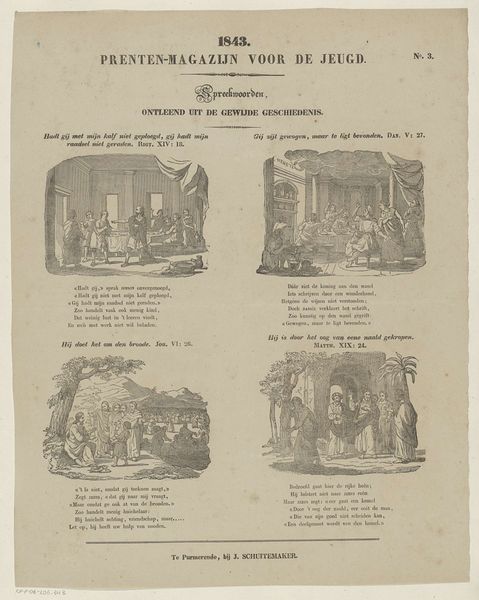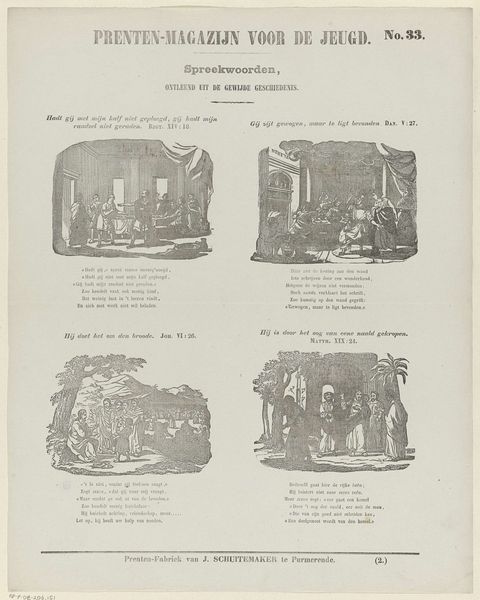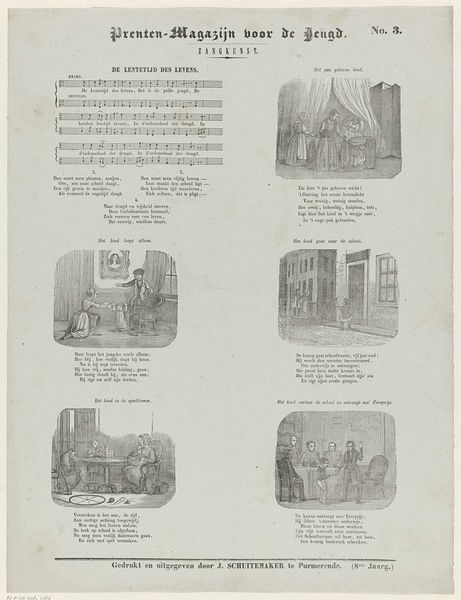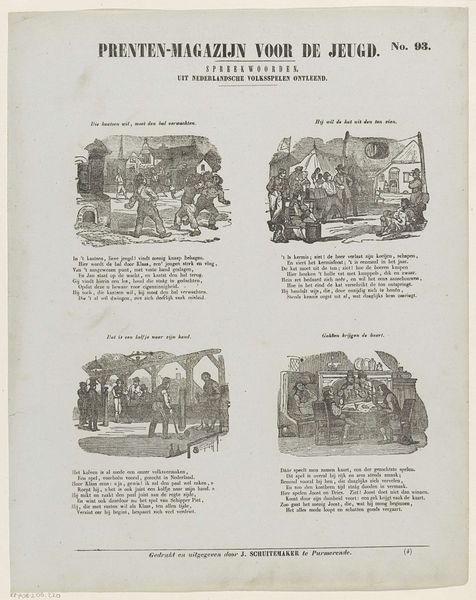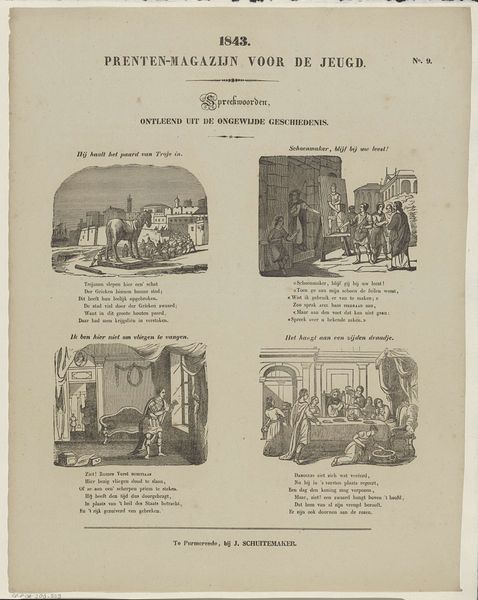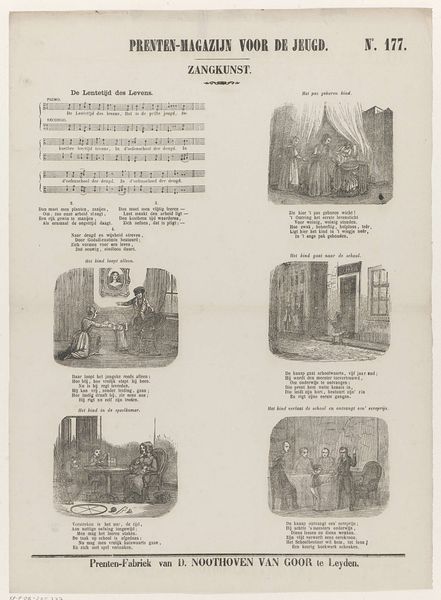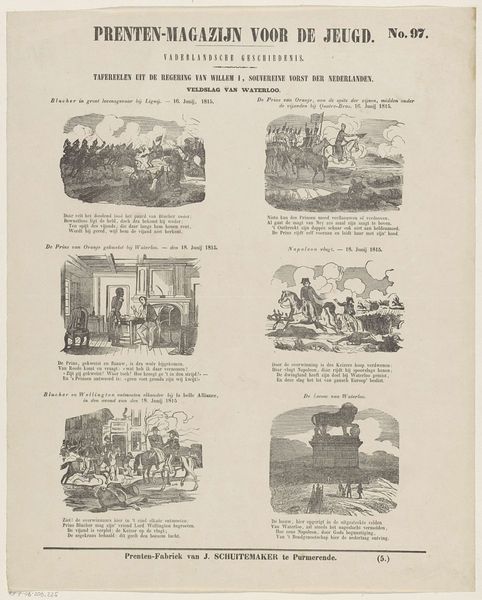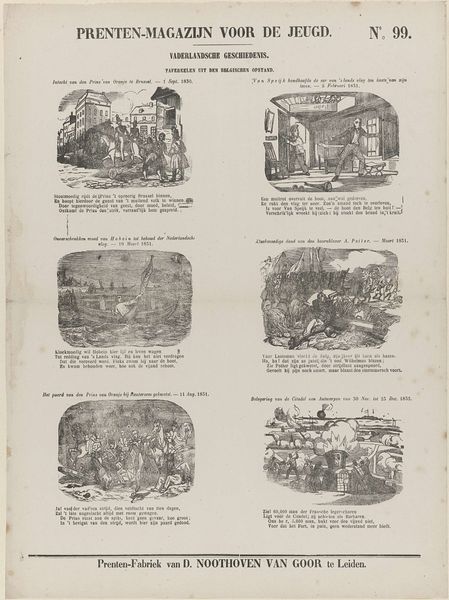
graphic-art, print, poster, engraving
#
graphic-art
#
narrative-art
# print
#
genre-painting
#
poster
#
engraving
Dimensions: height 414 mm, width 302 mm
Copyright: Rijks Museum: Open Domain
Curator: Here we have "De Chineesche Schimmen", or "The Chinese Shadows," a print from the period 1850-1881 by Dirk Noothoven van Goor. It appears to be an illustration for a youth magazine, showing different scenes within small puppet show theaters. Editor: My first impression is the graphic quality of the lines – sharp and repetitive, indicative of a mass-produced image intended for wide distribution and the black ink on white paper really makes the images pop! Curator: Exactly. The medium here, engraving, would have been a cost-effective method for reproducing images in a period of expanding print culture. This speaks volumes about how art and visual narratives reached broader audiences, and for the consumption of children no less. Editor: So, this print functions as a kind of advertisement for Prenten-Fabriek, promoting Noothoven van Goor’s print production. What is striking is the accessibility. It bridges art and entertainment for children, using fairground shows as the theme to entice readership and stimulate social education for youngsters. Curator: I am intrigued by the theme, “Chinese Shadows," implying an orientalist fascination so common then, likely reflecting the colonial reach of the Netherlands. These visual representations, despite potential inaccuracies, shape public perceptions of other cultures through the lens of spectacle and leisure. Editor: Indeed, consider how the material object circulates and gets consumed. Was it distributed to working class children who are likely being depicted as the spectators of the street entertainment pictured within each illustrated theatre. Or was this illustration consumed by bourgeois Dutch youth for their social and cultural betterment? Curator: That adds depth. The act of circulating imagery is never a neutral enterprise. It serves as a material component that underscores themes such as the reach of empire and Dutch social hierarchy as it’s shaped by production and accessibility. Editor: Yes, and the text directly underneath these mini puppet theater scenes indicate that the magazine encouraged reader participation to explore the narratives through theatre play. Curator: Thank you, seeing it from the point of material production helps highlight its broader context and cultural circulation, while also questioning our own gaze as contemporary observers. Editor: And by tracing this specific artifact in the context of 19th century European social production really gives a nuanced sense of childhood, commerce, and the power of representation.
Comments
No comments
Be the first to comment and join the conversation on the ultimate creative platform.
